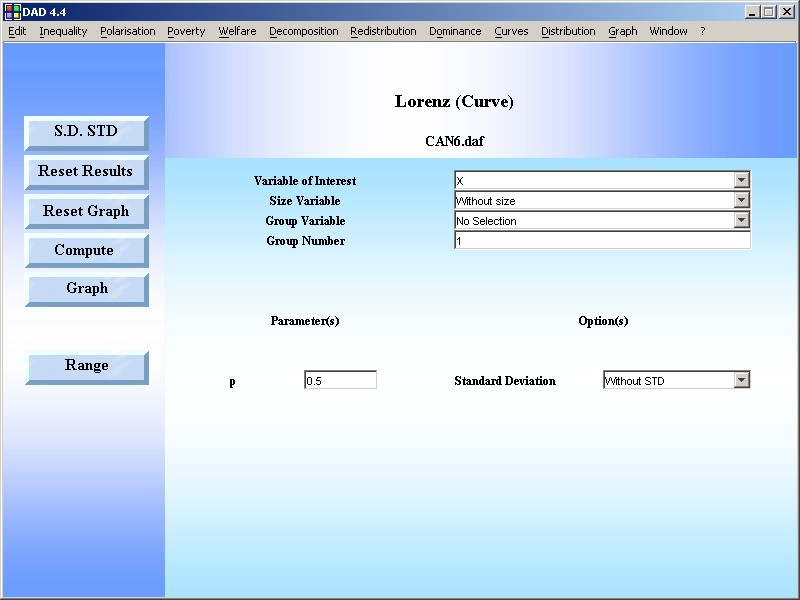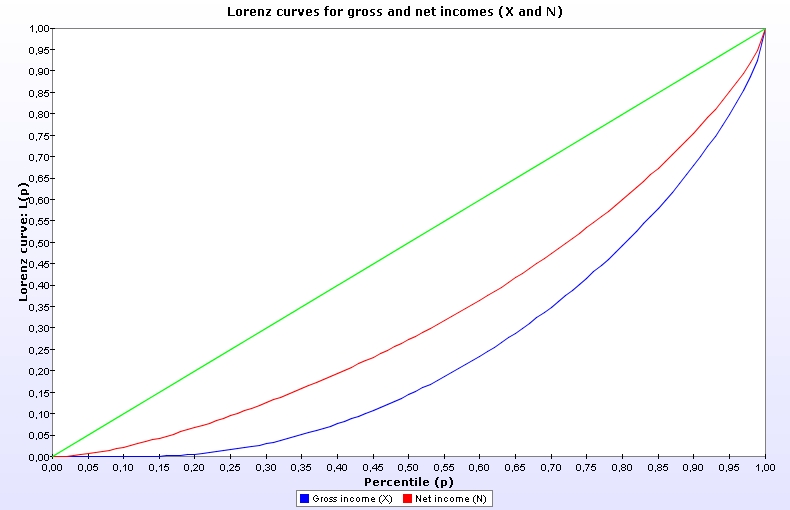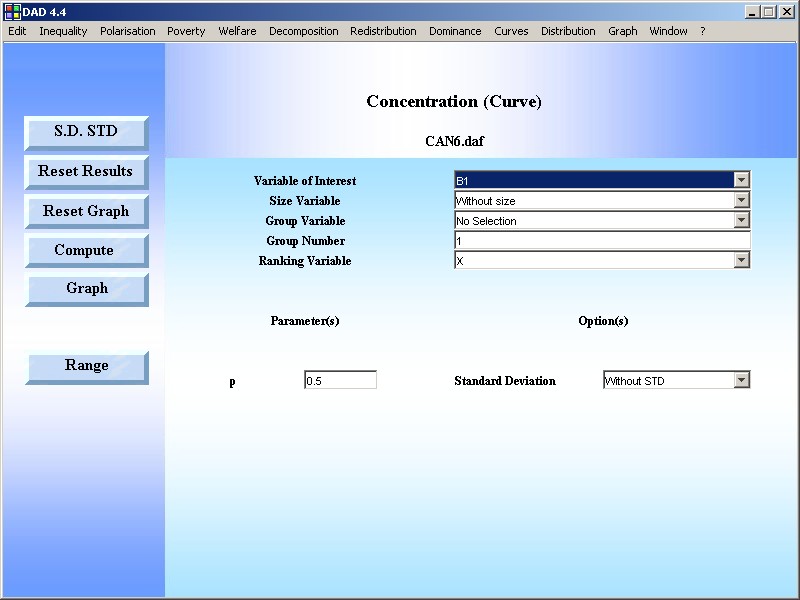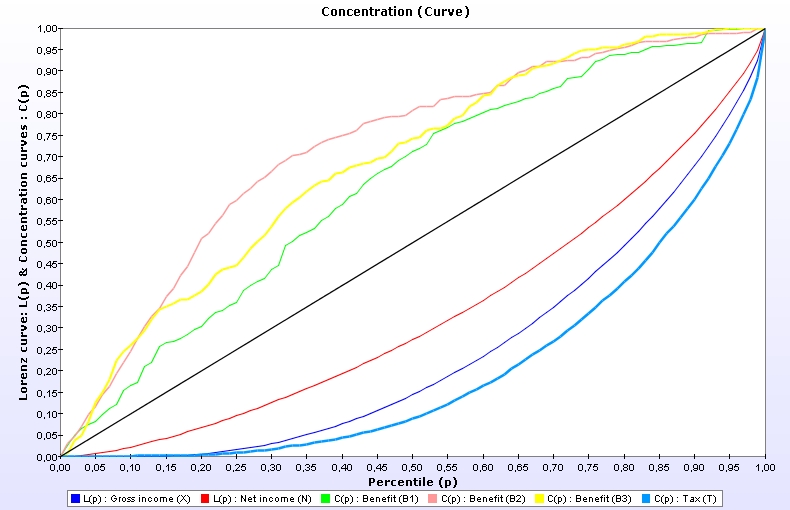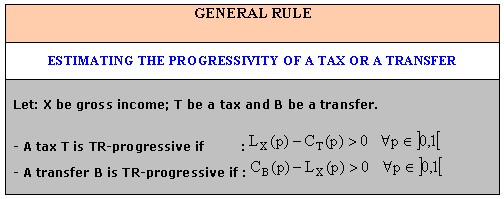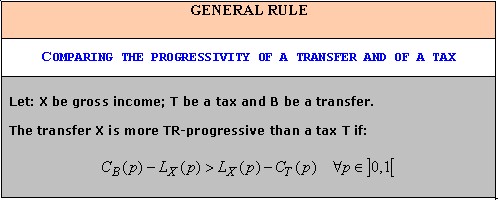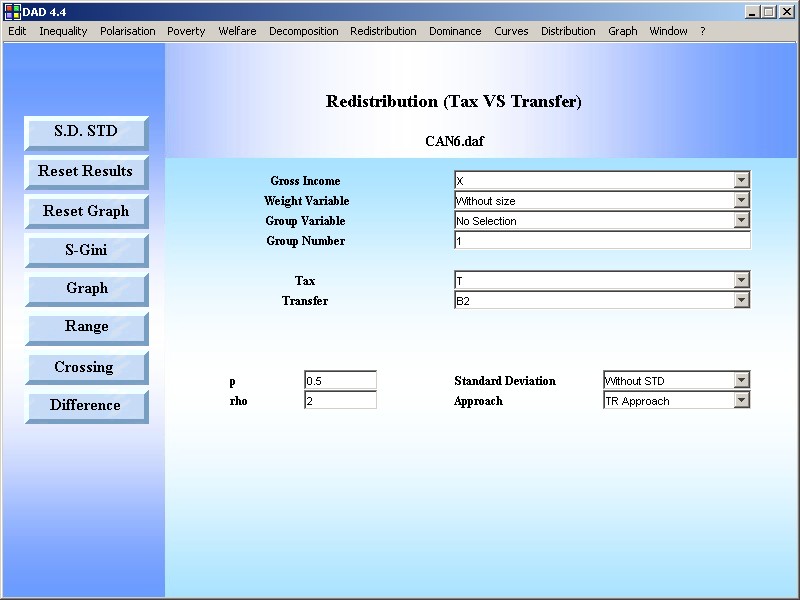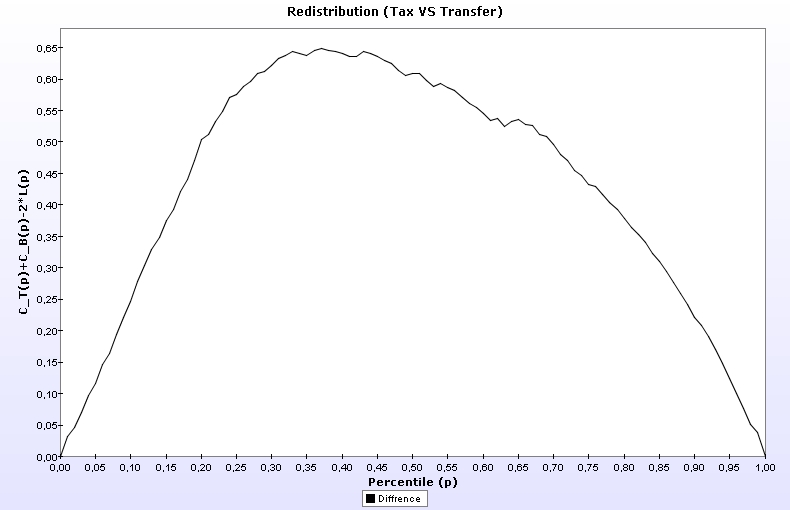| Exercise 8.2 |
|
Use the file CAN6 to draw the Lorenz Curve for gross income (X) and net income (N) in 1990 Canada.
|
|
Answer (a) |
|
STEP 1: Use the DAD Application: CURVES|LORENZ CURVE |
|
RESULTS |
|
